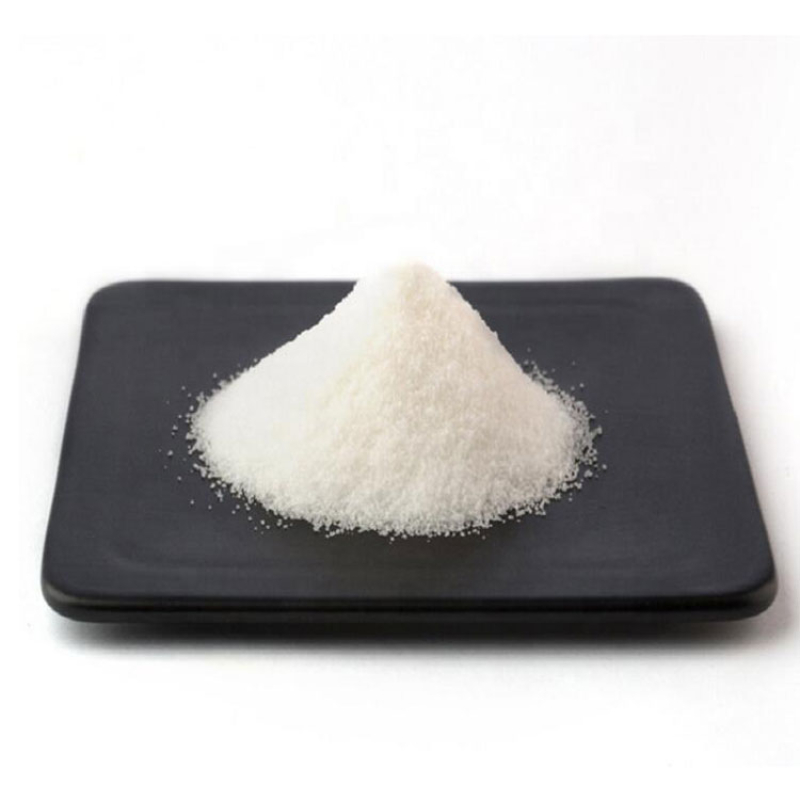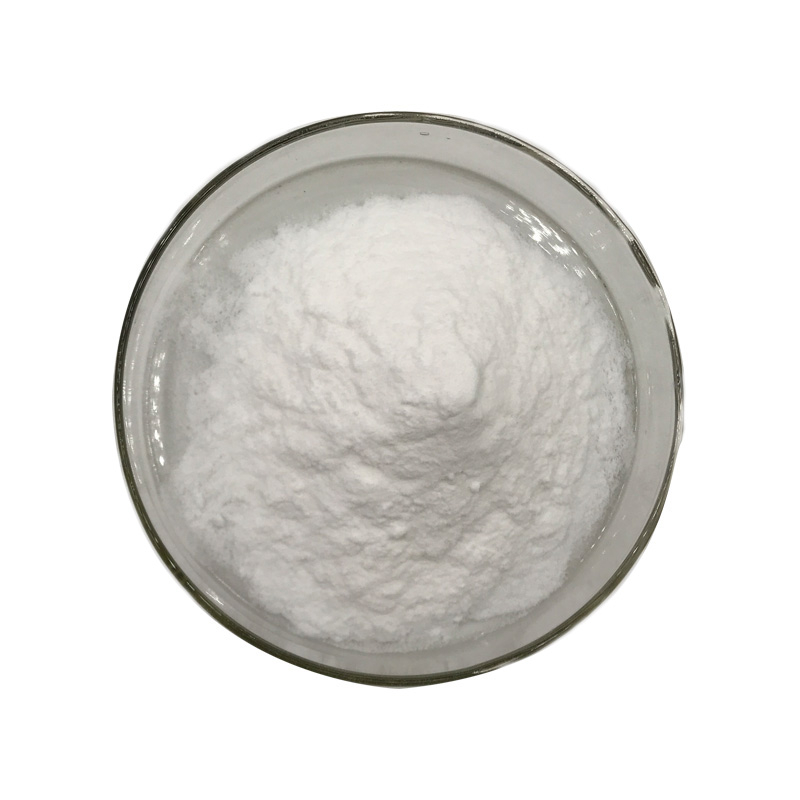2,3,4,6-Tetra-O-benzyl-D-glucopyranose Chemical PropertiesMelting point 145-149 °C(lit.)Boiling point 672.4±55.0 °C(Predicted)density 1.22±0.1 g/cm3(Predicted)storage temp. Sealed in dry,Store in freezer, under -20°Csolubility Soluble in chloroformpka11.87±0.70(Predicted)form Solidcolor White to Off-Whiteoptical activity[α]20/D +49±2°, c = 2% in dioxaneInChIKeyOGOMAWHSXRDAKZ-BKJHVTENSA-NSMILESOC1O[C@H](COCC2=CC=CC=C2)[C@@H](OCC2=CC=CC=C2)[C@H](OCC2=CC=CC=C2)[C@H]1OCC1=CC=CC=C1CAS DataBase Reference4132-28-9(CAS DataBase Reference)Safety InformationHazard
Contact Now
Products Description of Benzyl alcohol CAS#100-51-6Benzyl alcohol, also known as benzyl alcohol, has a molecular formula of C6H5CH2OH and a density of 1.045 g/mL at 25°C (lit.). It is the simplest fatty alcohol containing phenyl groups and can be regarded as hydroxymethyl-substituted benzene or phenyl-substituted methanol. It is a colorless, transparent, viscous liquid with a faint aromatic odor. Sometimes, after being left for a long time, benzyl alcohol will have a slight smell of bitter almonds due to oxidation.
Contact Now
Products Description of 1,2-O-Isopropylidene-Alpha-D-Xylofuranose CAS#20031-21-41,2-O-isopropylidene-α-D-xylofuranose can be used to prepare 3-deoxy-1,2-O-isopropylidene-D-xylofuranose. 3-Deoxy-1,2-O-isopropylidene-D-xylofuranose is a chiral intermediate for the synthesis of atorvastatin to produce the pharmacological side chain.
Contact Now
Products Description of Tetrabutylammonium iodide CAS#311-28-4Tetrabutylammonium iodide (TBAI) is a commonly used phase transfer catalyst that can increase the reaction rate or effectively promote a variety of chemical reactions. This reagent can be used as an iodine source to generate the iodide required for the reaction in situ, avoiding the use of some unstable and expensive iodides.
Contact Now
Products Description of Tetrabutylammonium Iodide COA#311-28-4Tetrabutylammonium iodide (TBAI) is a commonly used phase transfer catalyst that can increase the reaction rate or effectively promote a variety of chemical reactions. This reagent can be used as an iodine source to generate the iodide required for the reaction in situ, avoiding the use of some unstable and expensive iodides.
Contact Now
Products Description of Calcium gluconate CAS#299-28-5Calcium gluconate is the calcium salt of gluconic acid. It is a white crystalline or granular powder with a melting point of 201°C.
Contact Now
C18H36O CAS#143-28-2 Product Introduction:Meet Pure Oleyl Alcohol, scientifically identified as C18H36O and registered under the CAS#143-28-2. This Light yellow oily liquid is a critical component in a myriad of industries, offering versatility and reliability.
Contact Now
Aluminum Oxide CAS#1344-28-1 The oxide of aluminum is Al2O3. The natural crystalline mineral is called corundum, but the synthetic crystals used for abrasives are designated usually as aluminum oxide or marketed under trade names. For other uses and as a powder, it is generally called alumina.
Contact Now
Products Description of O,O-Dimethyl phosphoramidothioate CAS#17321-47-0 Spermine is a kind of polyamine, a polyamine substance containing two amino groups and two imino groups. It is a low molecular weight aliphatic nitrogenous base with biological activity produced in the process of biological metabolism.
Contact Now
Products Description of O-Phenylphenoxyethyl Acrylate CAS#72009-86-0White powderO-Phenylphenoxyethyl Acrylate Chemical Propertiesvapor pressure 0Pa at 20℃Water Solubility 30mg/L at 20℃InChIInChI=1S/C17H16O3/c1-2-17(18)20-13-12-19-16-11-7-6-10-15(16)14-8-4-3-5-9-14/h2-11H,1,12-13H2InChIKeyVAZQKPWSBFZARZ-UHFFFAOYSA-NSMILESC(OCCOC1=CC=CC=C1C1=CC=CC=C1)(=O)C=CLogP3.68EPA Substance Registry SystemPoly(oxy-1,2-ethanediyl), .alpha.-(1-oxo-2-propenyl)-.omega.-([1,1'-biphenyl]-2-yloxy)- (72009-86-0)Factory and Equipment ShowFast delivery timeInventory 2-3 working days New production
Contact Now
Products Description of D-Glucal CAS#13265-84-4D-glucosene, also called D-glucosene, is a pharmaceutical intermediate that can be prepared from pentaacetyl glucose through a three-step reaction.
Contact Now
Products Description of D-(-)-PANTOLACTONE CAS#599-04-2Hygroscopic crystals (benzene/petroleum ether, or obtained by sublimation). Melting point 80 (92°C), boiling point 130°C/2.4kPa, easily soluble in water, soluble in ethanol, ether, chloroform, carbon disulfide, benzene.
Contact Now
Products Description of Ammonium phosphate dibasic CAS#7783-28-0Diammonium phosphate, also known as diammonium hydrogen phosphate (DAP), is a compound fertilizer containing two nutrients, nitrogen and phosphorus. Diammonium hydrogen phosphate is a high-concentration quick-acting fertilizer that is easily soluble in water and has less solids after dissolution. It is suitable for various crops and soils, especially for crops that prefer nitrogen and require phosphorus. It can be used as base fertilizer or topdressing, and deep application is recommended.
Contact Now
Products Description of Metatitanic acid CAS#12026-28-7Titanic acid is an intermediate product of the sulfuric acid method for producing titanium dioxide.
Contact Now
Products Description of Benzyldimethylhexadecylammonium Chloride CAS#122-18-9Cetaxonium chloride, also known as hexadecyl dimethyl benzyl ammonium chloride, is a cationic quaternary ammonium surfactant and one of the components of benzalkonium chloride (benzalkonium chloride is a mixture of benzyl alkyl dimethyl ammonium, in which the alkyl groups are mainly n-C12H25 (dodecane), n-C14H29 (tetradecane) and n-C16H33 (hexadecane)). Cetaxonium chloride has the characteristics of high lipophilicity and low water solubility.
Contact Now
Products Description of O-Phenanthroline CAS#66-71-71,10-Phenanthroline monohydrate is an organic intermediate, white crystalline powder. It is a redox indicator, a reagent for the determination of ferrous iron, palladium, vanadium, copper, and iron.Monohydrate is a white crystalline powder.
Contact Now
Products Description of Benzyldimethylhexadecylammonium Chloride CAS#122-18-9Cetaxel chloride, also known as hexadecyl dimethyl benzyl ammonium chloride, is a cationic quaternary ammonium surfactant and one of the components of benzalkonium chloride (benzalkonium chloride is a mixture of benzyl alkyl dimethyl ammonium, in which the alkyl groups are mainly n-C12H25 (dodecane), n-C14H29 (tetradecane) and n-C16H33 (hexadecane)).Benzyldimethylhexadecylammonium chloride Chemical PropertiesMelting point 55-65 °C(lit.)Boiling point 550.14°C (rough estimate)density 0.9089 (rou
Contact Now
Products Description of 2-Deoxy-D-glucose CAS#154-17-62-Deoxy-D-glucose is an anti-metabolite of D-glucose. It has the effects of interfering with the synthesis of virus-specific glycoproteins, inhibiting the proliferation of herpes simplex virus, RAN and DNA enveloped viruses, and cancer cells. At present, antiviral and anticancer drugs prepared from 2-deoxy-D-glucose have been clinically used in the treatment of herpes simplex virus and cancer, and medical health products and anti-aging cosmetics prepared from 2-deoxy-D-glucose have also been launched on the market.
Contact Now
Products Description of D-(-)-ERYTHROSE CAS#583-50-6D-erythrose-4-phosphate is an intermediate in the enzymatic conversion of carbohydrates.D-(-)-ERYTHROSE Chemical PropertiesMelting point <25℃Boiling point 144.07°C (rough estimate)alpha D20 +1° -14.5° (3 days, c = 11)density 1.0500 (rough estimate)refractive index 1.498storage temp. 2-8°Csolubility Methanol, Waterform syruppka12.49±0.20(Predicted)color light yellowWater Solubility Fully miscible in water.Sensitive HygroscopicMerck 14,3690BRN 1721698CAS DataBase Reference
Contact Now
Products Description of Ademetionine 1,4-butanedisulfonate CAS#101020-79-5S-Adenosylmethionine 1,4-butanedisulfonate is used to synthesize sulfo-adenosyl-L-methionine (SAMe) salt.Ademetionine 1,4-butanedisulfonate Chemical PropertiesMelting point >48oC (dec.)storage temp. under inert gas (nitrogen or Argon) at 2-8°Csolubility DMSO (Slightly, Heated), Methanol (Slightly), Water (Slightly)form Solidcolor Off-WhiteStability:HygroscopicInChIKeyPVCDYZJGZPCASW-FGEWMKOMNA-MSMILESC(CCCS(O)(=O)=O)S(O)(=O)=O.O[C@@H]1[C@@H]([C@@H](C[S+](C)CC[C@H](N)C(=O)O)O[C@H]1N1C=NC2C(
Contact Now
Products Description of Triethylene glycol bis(2-ethylhexanoate) CAS#94-28-0This product is a solvent-based cold-resistant and environmentally friendly plasticizer with excellent low-temperature resistance, durability, oil resistance, UV resistance and antistatic properties, and has low viscosity and certain lubricity. This product is a special plasticizer for polyvinyl butyral (PVB safety glass) and synthetic rubber, which can make them produce low-temperature performance and low volatility. It can also be used for polyester cloth, adhesives and sealing materials.
Contact Now
Products Description of 2,2-Dimorpholinodiethylether CAS#6425-39-42,2-Dimorpholinyl diethyl ether is a transparent liquid.2,2-Dimorpholinodiethylether Chemical PropertiesMelting point -28 °CBoiling point 309 °C (lit.)density 1.06 g/mL at 25 °C (lit.)vapor pressure 66Pa at 20℃refractive index n20/D 1.484(lit.)Fp 295 °Fstorage temp. 2-8°Csolubility Chloroform (Slightly), Ethyl Acetate (Slightly)form Oilpka6.92±0.10(Predicted)color Pale Brown to Light BrownWater Solubility 100g/L at 20℃InChIKeyZMSQJSMSLXVTKN-UHFFFAOYSA-NLogP0.5
Contact Now
Products Description of Color Developing Agent CD-3 CAS#24567-76-8White powder crystalColor Developing Agent CD-3 Chemical PropertiesWater Solubility Soluble in waterform powder to crystalcolor White to Light yellow to Light orangeInChIInChI=1S/2C12H21N3O2S.3H2O4S/c2*1-4-15(8-7-14-18(3,16)17)11-5-6-12(13)10(2)9-11;3*1-5(2,3)4/h2*5-6,9,14H,4,7-8,13H2,1-3H3;3*(H2,1,2,3,4)InChIKeyNPDFXFLCEDDWEG-UHFFFAOYSA-NSMILESC1(=CC=C(N)C(C)=C1)N(CC)CCNS(=O)(=O)C.C1(=CC=C(N)C(C)=C1)N(CC)CCNS(=O)(=O)C.S(=O)(=O)(O)O.S(=O)(=O)(O)O.S(=O)(=O)(O)OSafety InformationHazard Codes Xn;N,N,XnRisk
Contact Now
Products Description of Octadecanethiol CAS#2885-00-9Octadecanethiol, molecular formula C18H38S.Octadecanethiol Chemical PropertiesMelting point 30-33 °C(lit.)Boiling point 204-210 °C11 mm Hg(lit.)density 0.847 g/mL at 25 °C(lit.)vapor pressure <0.5 hPa (20 °C)refractive index n20/D 1.3610Fp 55 °Fstorage temp. Store below +30°C.form Crystalline Solidpka10.49±0.10(Predicted)Specific Gravity0.832 (30℃)0.847color WhiteWater Solubility InsolubleBRN 1811934Exposure limitsNIOSH: Ceiling 0.5 ppm(5.9
Contact Now


































